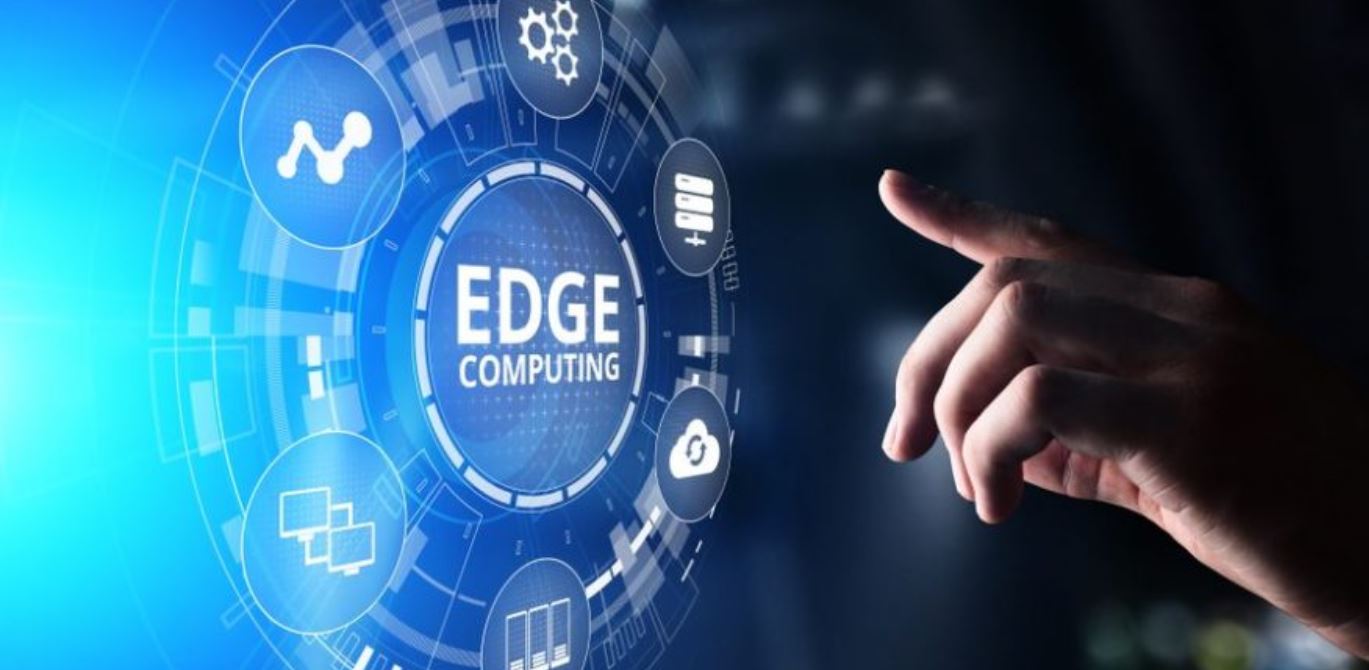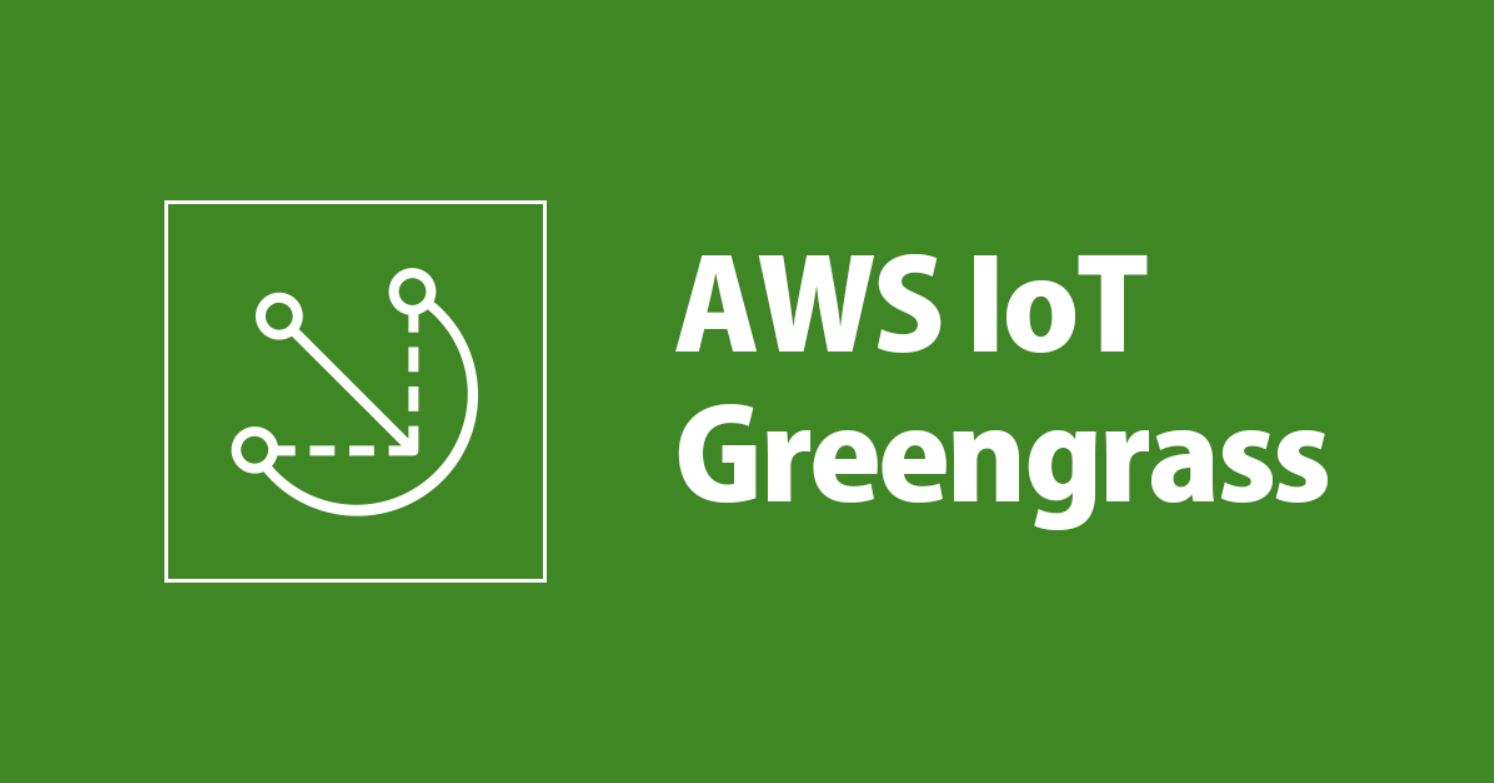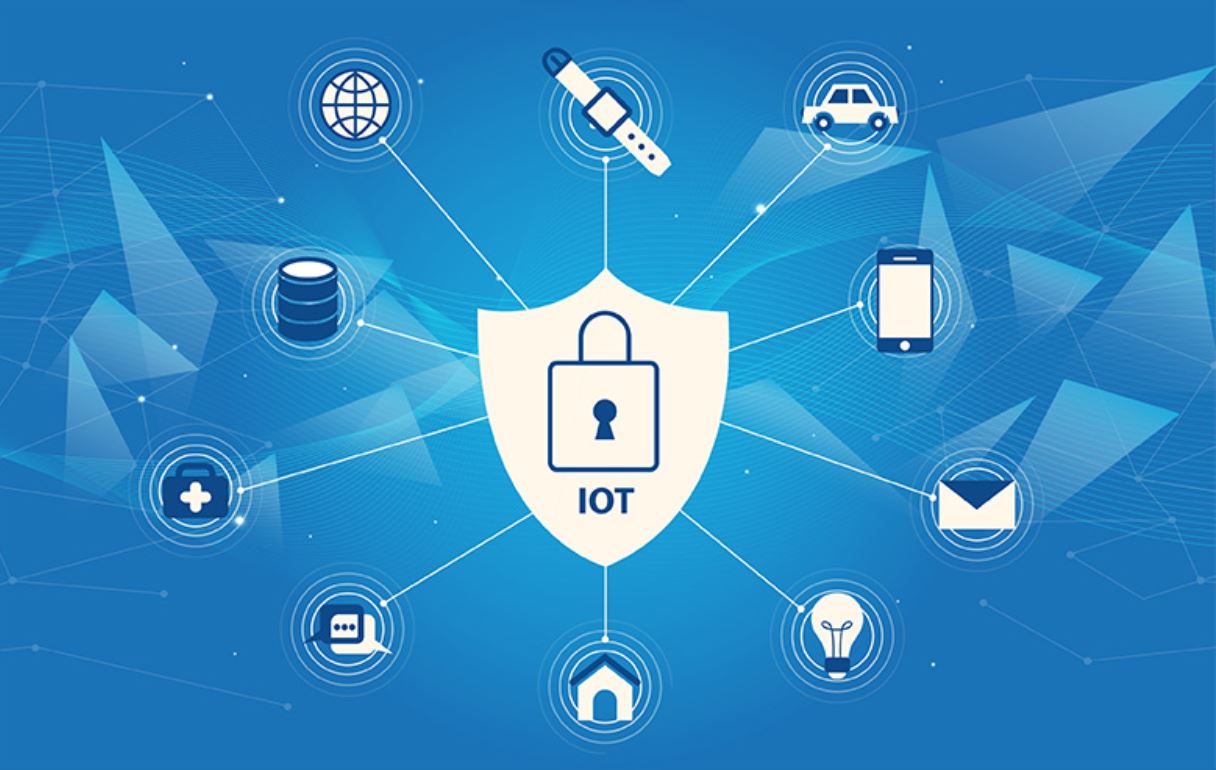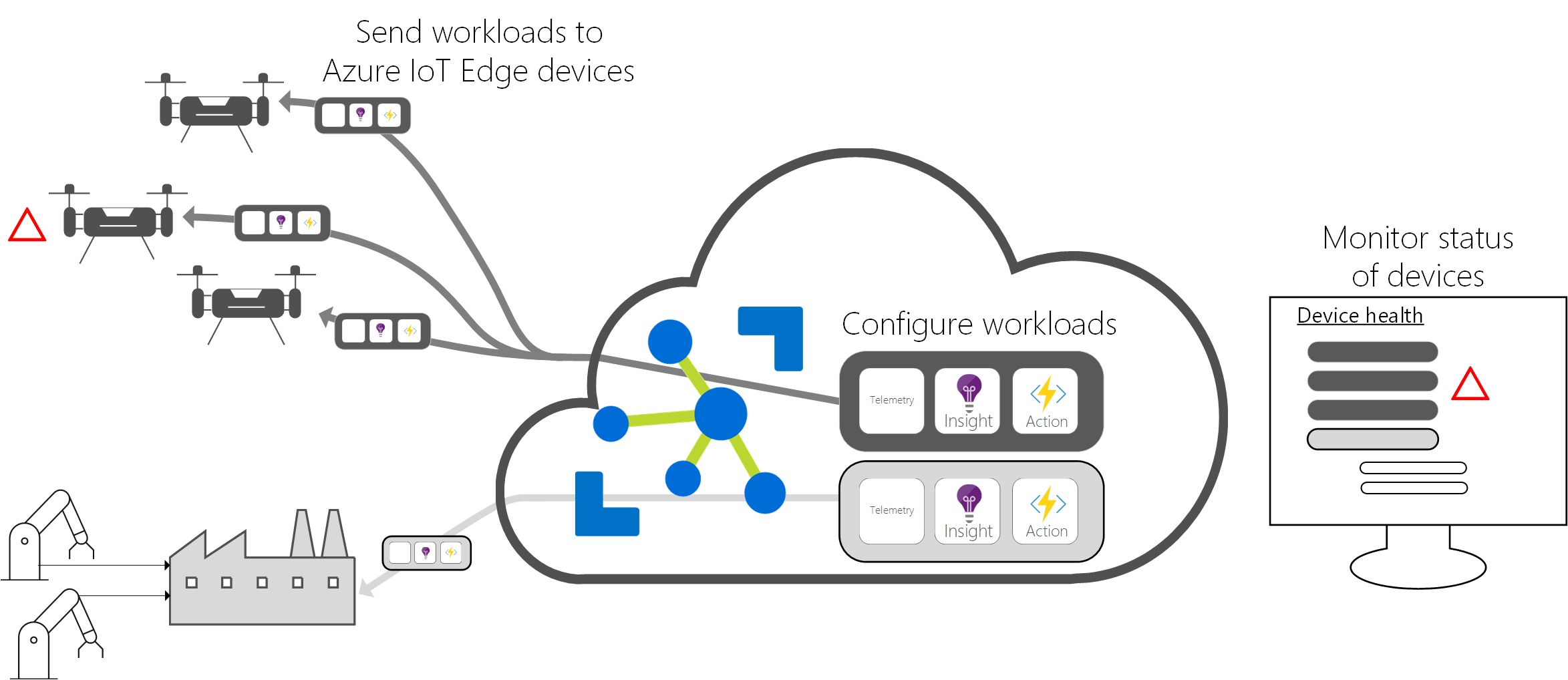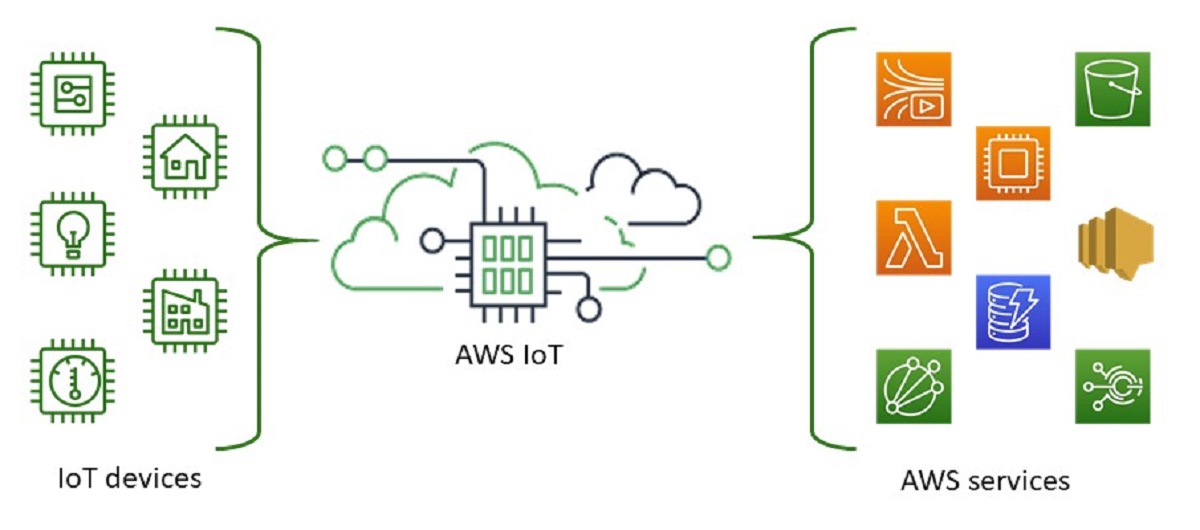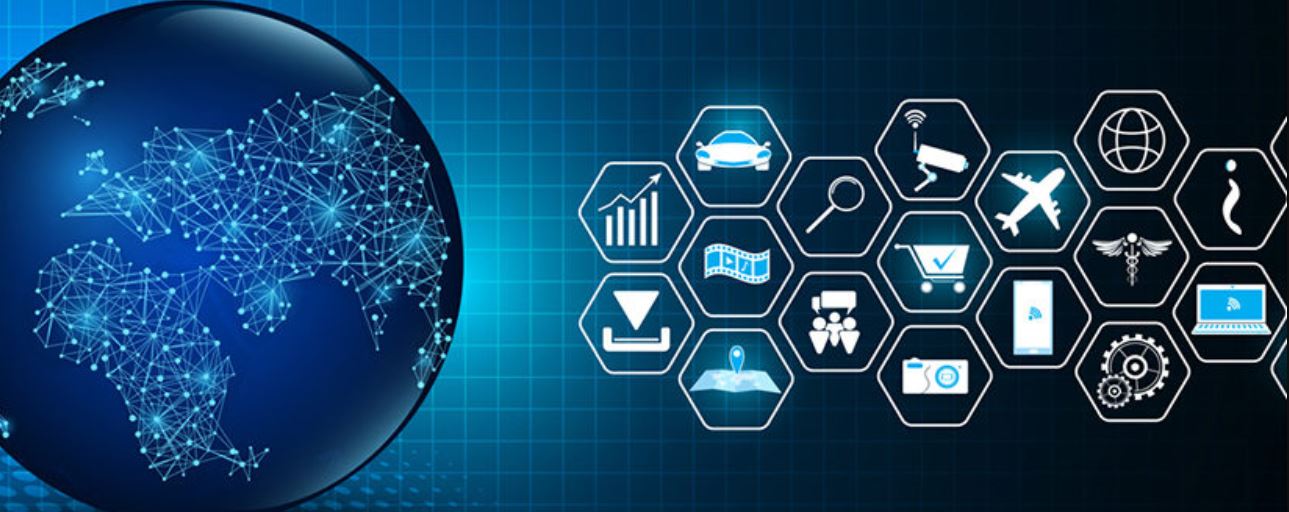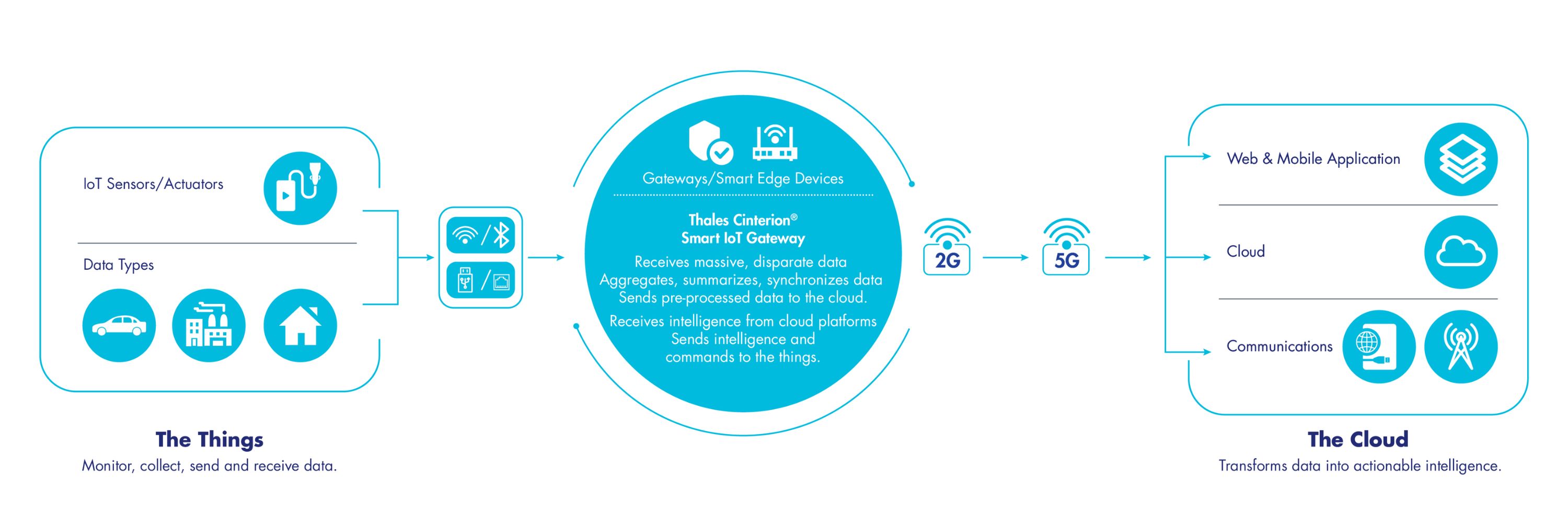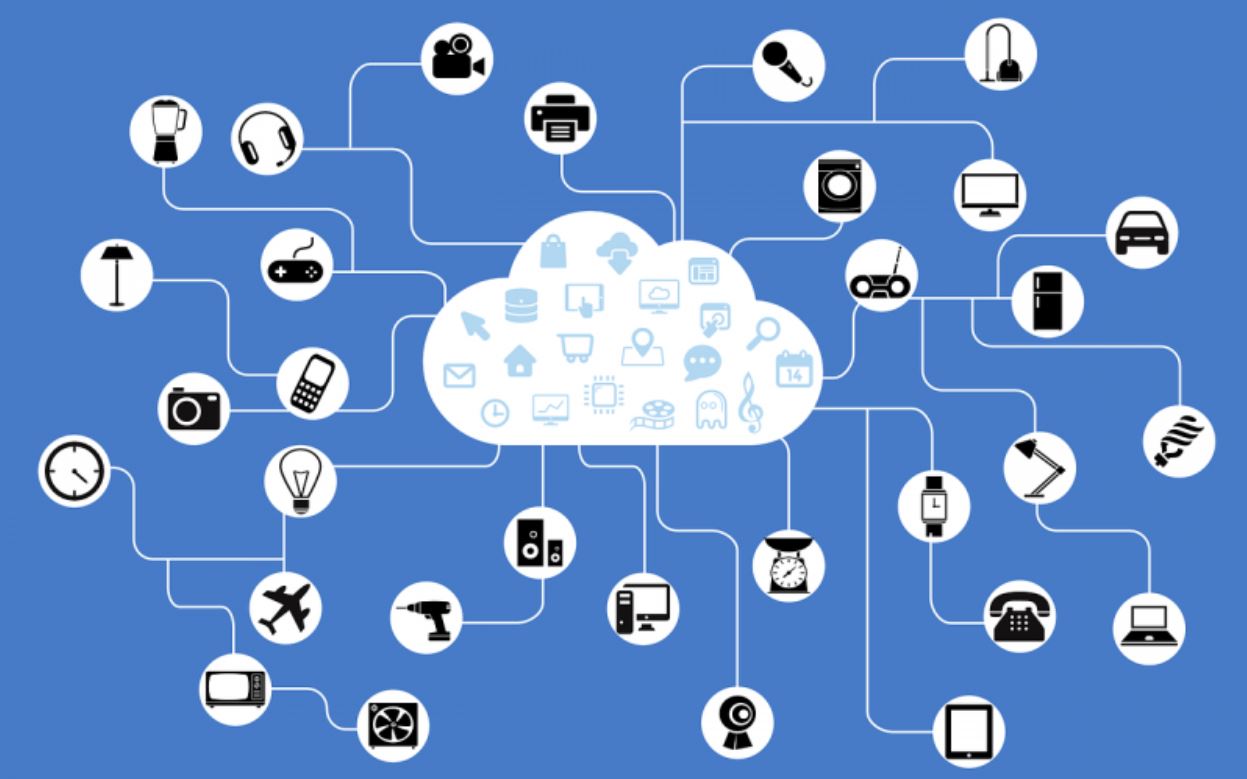Introduction
Welcome to the world of the Internet of Things (IoT) and innovative technologies that are revolutionizing the way we live and interact with our surroundings. With the increasing adoption of IoT devices, the need for efficient data processing and analysis has become paramount. This is where Edge Computing steps in, taking IoT to the next level.
IoT refers to the vast network of interconnected devices embedded with sensors, software, and connectivity, enabling them to collect and exchange data. These devices, ranging from smart home appliances to industrial machinery, generate massive amounts of data that need to be processed and analyzed.
Traditionally, IoT devices would send all their data to a centralized cloud server for processing. However, this approach has several drawbacks. It creates latency issues, as data needs to travel long distances between the devices and the server. Additionally, centralized processing demands high bandwidth and storage capacity, making it inefficient and expensive.
This is where Edge Computing comes into play. It involves processing and analyzing data on the edge of the network, closer to where it is generated. This decentralized approach eliminates the need for data to traverse long distances, reducing latency and improving real-time response capabilities. Edge Computing brings the power of processing closer to the IoT devices, enabling faster decision-making and more efficient resource allocation.
But what exactly is Edge IoT? Edge IoT combines the principles of IoT and Edge Computing to create a powerful and dynamic ecosystem. It involves deploying IoT devices with Edge Computing capabilities, allowing them to process and analyze data at the edge of the network.
With Edge IoT, the devices themselves become intelligent and capable of performing complex tasks without relying on remote cloud servers. They can collect, analyze, and respond to data in real-time, bringing unprecedented levels of efficiency and agility to various industries and applications.
In the following sections, we will explore the benefits of Edge IoT, its use cases across different industries, as well as the challenges and limitations it may face. We will also take a glimpse into the future of Edge IoT and its potential impact on our lives.
What is IoT?
The Internet of Things (IoT) refers to the network of interconnected devices embedded with sensors, software, and connectivity capabilities. These devices, often referred to as “smart” devices, can collect and exchange data with each other and with a central server or cloud-based platform.
The concept of IoT revolves around the idea of enabling devices to communicate and share data seamlessly, without human intervention. By connecting devices to the internet and allowing them to interact with one another, IoT creates a network that can gather and analyze vast amounts of data in real-time.
IoT devices come in various forms, ranging from consumer products like smartphones, wearables, and smart home appliances to industrial equipment, vehicles, and infrastructure elements. These devices are equipped with sensors that can detect and measure specific conditions such as temperature, humidity, motion, and more.
By collecting data from the environment, IoT devices can provide valuable insights that enable businesses and individuals to make informed decisions and automate processes. For example, in a smart home, IoT devices can monitor energy usage, adjust temperature settings, and control appliances, all based on real-time data and user preferences.
Moreover, IoT has the potential to revolutionize industries such as healthcare, agriculture, transportation, and manufacturing. In healthcare, wearable devices can monitor vital signs and transmit data to healthcare providers, enabling remote patient monitoring and timely interventions.
IoT also enables the concept of “smart cities”, where infrastructure elements like streetlights, parking systems, and waste management systems are interconnected to optimize resource usage and improve the quality of life for residents.
However, the vast amount of data generated by IoT devices poses challenges in terms of processing, storage, and privacy. The sheer volume of data requires scalable and efficient infrastructure to handle the influx of information. Additionally, ensuring data privacy and security is crucial to protect sensitive information from unauthorized access.
Nevertheless, the promise of IoT is immense. It has the potential to transform industries, improve efficiency, enhance sustainability, and create new opportunities for innovation. As technology advances, the Internet of Things will continue to evolve and shape the world we live in.
What is Edge Computing?
Edge Computing is a distributed computing paradigm that brings data processing and computation closer to the source of data generation. It enables real-time data analysis, rapid decision-making, reduced latency, and improved overall performance.
Traditionally, computing tasks were performed in centralized data centers or cloud servers, requiring data to travel long distances for processing. However, with the rise of IoT and the increasing amount of data being generated, this centralized approach has proven to be inefficient in certain scenarios.
Edge Computing aims to address the limitations of centralized processing by moving computation closer to where data is being generated or consumed. This can be done through the deployment of computing resources, such as servers and edge devices, at the network edge.
Edge Computing takes advantage of the decentralized nature of IoT devices, leveraging their processing power and storage capabilities to perform tasks locally. By doing so, it reduces the need for data to travel long distances and minimizes the latency introduced by network communication.
This distributed approach brings several benefits. First and foremost, it enables real-time data analysis and immediate response, as data is processed locally without relying on a remote server. This is particularly valuable in applications where timely decision-making is critical, such as in autonomous vehicles or industrial automation.
Edge Computing also improves the overall performance and reduces the burden on the network. By offloading computation to the edge, it reduces the amount of data that needs to be transmitted to the cloud, resulting in lower bandwidth requirements and reduced network congestion.
Furthermore, Edge Computing enhances data privacy and security. Since sensitive data is processed and stored locally, it reduces the risk of data breaches and unauthorized access. This is particularly important in applications like healthcare or financial services, where data privacy is of utmost importance.
Overall, Edge Computing is a paradigm that complements the capabilities of IoT by bringing computation closer to the edge of the network. By leveraging the processing power of edge devices, it enables real-time analytics, reduces latency, improves performance, and enhances data privacy and security.
What is Edge IoT?
Edge IoT, also known as Edge of Things or Edge-enabled IoT, is a convergence of two powerful technologies – the Internet of Things (IoT) and Edge Computing. It combines the capabilities of IoT devices with the processing power and intelligence of Edge Computing, creating a dynamic and efficient ecosystem.
Edge IoT involves deploying IoT devices with Edge Computing capabilities, enabling them to process and analyze data at the edge of the network. These devices are equipped with sensors, connectivity, and computational capabilities, allowing them to collect data from the environment and make real-time decisions without relying heavily on a remote cloud server.
With Edge IoT, devices become more intelligent and autonomous, capable of performing advanced analytics, machine learning, and artificial intelligence algorithms locally. This empowers them to respond quickly to changes and events in their immediate environment, without the need for constant communication with a central server.
One of the key benefits of Edge IoT is reduced latency. By processing data locally, closer to where it is generated, Edge IoT minimizes the time it takes for data to travel across the network. This is particularly crucial in applications where real-time responsiveness is vital, such as in self-driving cars, industrial automation, or healthcare monitoring.
Edge IoT also increases efficiency and reduces bandwidth requirements. Since data is processed locally, only relevant information is transmitted to the cloud, optimizing network utilization and reducing the cost associated with transmitting large amounts of raw data. This efficient use of resources is especially valuable in scenarios where network connectivity is limited or unreliable.
Furthermore, Edge IoT enhances data privacy and security. By keeping sensitive data at the edge, it minimizes the risk of data breaches and provides more control over data access. This is crucial in industries like healthcare, where patient privacy and confidentiality are paramount.
Use cases for Edge IoT span across various industries. In transportation, Edge IoT can enable real-time traffic monitoring, predictive maintenance of vehicles, and autonomous navigation. In agriculture, it can facilitate precision farming, optimizing resource usage and improving crop yields. In smart cities, Edge IoT can control and monitor public services such as street lighting and waste management.
Edge IoT represents an exciting paradigm shift in the way we leverage the power of IoT and Edge Computing. It brings intelligence and agility to IoT devices, enabling faster decision-making, reduced latency, improved efficiency, and enhanced data privacy. As technology continues to advance, Edge IoT is poised to drive innovation and shape the future of connected devices and smart ecosystems.
Benefits of Edge IoT
Edge IoT offers a wide range of benefits that greatly enhance the capabilities of IoT devices and enable more efficient and intelligent operations. Let’s explore some of the key advantages provided by Edge IoT:
1. Reduced Latency: By processing data at the edge of the network, closer to the source, Edge IoT greatly reduces latency. This allows for real-time data analysis and faster decision-making, critical in time-sensitive applications like autonomous vehicles, industrial automation, and emergency response systems.
2. Improved Reliability: Edge IoT enhances system reliability by minimizing reliance on a centralized cloud server. With local data processing and decision-making capabilities, devices can continue to operate even in the event of network interruptions or latency issues, ensuring uninterrupted services and operations.
3. Bandwidth Optimization: By analyzing and filtering data at the edge, Edge IoT reduces the bandwidth requirements for transmitting information to the cloud. Only relevant and actionable data is sent, reducing network congestion, optimizing bandwidth utilization, and saving on data transmission costs.
4. Enhanced Data Privacy and Security: Edge IoT keeps sensitive data local, minimizing the risk of data breaches and unauthorized access. With data processed and stored on the edge devices, privacy and security concerns are significantly mitigated, especially in industries such as healthcare and finance where data protection is critical.
5. Cost Efficiency: Edge IoT reduces the cost associated with data transmission and storage. By processing and analyzing data locally, organizations can minimize their reliance on expensive cloud infrastructure, saving on bandwidth costs and reducing the need for massive data storage and processing capabilities in the cloud.
6. Scalability: Edge IoT offers scalable solutions that can be deployed in various environments and industries. Whether it’s in a factory, a smart city, or a remote location with limited connectivity, Edge IoT can be tailored to meet the specific needs of each use case, providing flexibility and adaptability.
7. Real-time Insights: With Edge IoT, devices can generate real-time insights and predictions without relying on the cloud. This enables dynamic decision-making based on the latest data, leading to more efficient resource allocation, improved operational effectiveness, and better overall business outcomes.
8. Offline Capabilities: Edge IoT enables devices to function even in the absence of a stable internet connection. By processing data locally, devices can continue to collect and analyze data, allowing for uninterrupted operations in remote areas or during network outages.
The benefits of Edge IoT are transforming industries and enabling new possibilities for innovation. From improved performance and responsiveness to enhanced data privacy and cost efficiency, Edge IoT unlocks the true potential of IoT devices, offering a more intelligent and efficient approach to data processing and decision-making.
Use Cases of Edge IoT
Edge IoT has extensive applications across a wide range of industries, enabling innovative solutions and driving digital transformation. Let’s explore some of the key use cases where Edge IoT is making a significant impact:
1. Smart Manufacturing: In the manufacturing industry, Edge IoT plays a crucial role in optimizing production processes. By deploying IoT devices equipped with Edge Computing capabilities, manufacturers can monitor machine performance, collect real-time data, and perform predictive maintenance. Edge IoT enables proactive decision-making, reduces downtime, and improves overall operational efficiency.
2. Autonomous Vehicles: Edge IoT is revolutionizing the automotive industry by enabling real-time data analysis and decision-making within autonomous vehicles. By leveraging Edge Computing capabilities, vehicles can process sensor data, analyze road conditions, and make split-second decisions without relying on a centralized cloud server. This ensures faster response times and enhances the safety and reliability of autonomous vehicles.
3. Smart Cities: Edge IoT is a driving force behind the development of smart cities. By deploying IoT devices at the edge, cities can monitor and control various aspects of urban life, such as traffic management, waste management, energy usage, and public safety. Edge IoT enables efficient resource allocation, reduces congestion, and improves the quality of life for residents.
4. Healthcare Monitoring: Edge IoT has transformative applications in the healthcare industry. By equipping wearable devices with Edge Computing capabilities, real-time health monitoring and analysis can be achieved. Patients can have continuous monitoring of vital signs, enabling early detection of health issues and timely interventions. Edge IoT ensures immediate response, reducing the need for constant communication with healthcare providers and improving patient outcomes.
5. Retail Analytics: In the retail sector, Edge IoT is used to gather real-time customer data and provide personalized shopping experiences. By utilizing edge devices, retailers can analyze customer behavior, preferences, and sentiment in-store, enabling targeted marketing campaigns and improving customer satisfaction.
6. Agriculture: Edge IoT offers significant benefits to the agriculture industry. By deploying IoT devices with sensors and Edge Computing capabilities, farmers can monitor soil conditions, weather patterns, and crop health in real-time. This enables precise irrigation, pest management, and fertilizer application, resulting in higher crop yields, reduced water usage, and improved sustainability.
7. Energy Management: Edge IoT plays a crucial role in optimizing energy consumption and improving energy efficiency. By deploying smart meters and sensors at the edge, data can be collected and analyzed in real-time, allowing for dynamic energy demand management and efficient resource allocation. This enables cost savings, reduced energy waste, and increased sustainability.
8. Logistics and Supply Chain: Edge IoT enhances logistics and supply chain operations by providing real-time visibility and insights. By deploying IoT devices with Edge Computing capabilities, businesses can track shipments, monitor inventory levels, and optimize logistics routes. Real-time data analysis enables efficient inventory management, reduces delays, and improves overall supply chain performance.
These are just a few examples of how Edge IoT is transforming industries and enabling innovative solutions. As technology continues to advance, the potential use cases for Edge IoT will continue to grow, driving advancements in efficiency, productivity, and sustainability across various sectors.
Challenges and Limitations of Edge IoT
While Edge IoT offers numerous benefits and exciting possibilities, there are also some challenges and limitations that need to be considered. Let’s explore the key challenges associated with Edge IoT:
1. Limited Processing Power and Storage: Edge devices often have limited processing power and storage capacity compared to centralized cloud servers. This can pose limitations in running resource-intensive applications and storing large amounts of data locally. Optimization techniques and intelligent resource allocation are necessary to address these limitations.
2. Network Connectivity: Edge devices rely on network connectivity to transmit data and receive updates. In areas with poor network coverage or intermittent connectivity, the reliability and real-time capabilities of Edge IoT may be compromised. Ensuring reliable and stable network connectivity becomes essential for effective implementation.
3. Data Security and Privacy: Edge IoT necessitates the collection, processing, and storage of vast amounts of data. This raises concerns about data security and privacy. Safeguarding sensitive information at the edge becomes critical, requiring robust encryption, authentication, and access control mechanisms.
4. Lack of Standardization: The lack of standardized protocols and frameworks for Edge IoT devices poses interoperability challenges. This can hinder the seamless integration and coordination of multiple devices from different manufacturers, limiting the scalability and compatibility of Edge IoT solutions.
5. Management and Maintenance: With the distributed nature of Edge IoT, managing and maintaining a large number of edge devices can be complex. Upgrading firmware, ensuring security patches, and monitoring device health becomes challenging, requiring efficient device management systems.
6. Scalability: Scaling an Edge IoT solution across a large number of devices can be challenging. As the number of devices increases, managing the network and coordination between devices becomes complex. Scaling Edge IoT systems requires careful planning and consideration of network architecture and protocols.
7. Cost: Deploying and maintaining Edge IoT infrastructure can be costly, especially for large-scale implementations. The cost of edge devices, network infrastructure, and ongoing maintenance can pose a challenge for organizations seeking to adopt Edge IoT technologies.
8. Data Processing and Analytics: Edge devices have limited computational resources compared to cloud servers. Performing complex data processing and analytics tasks within resource-constrained environments can be challenging. Efficient algorithms and optimization techniques are necessary to handle data processing within these limitations.
9. Regulatory and Compliance: Edge IoT solutions may need to comply with industry-specific regulations and standards related to data privacy, security, and other legal requirements. Ensuring compliance with regional and industry-specific regulations becomes crucial and may pose additional challenges.
Overcoming these challenges and addressing the limitations of Edge IoT requires a holistic approach, involving collaboration between various stakeholders, including device manufacturers, network providers, and regulatory bodies. As technology continues to advance, these challenges are expected to be addressed, enabling the wider adoption and successful implementation of Edge IoT solutions.
Future of Edge IoT
The future of Edge IoT holds immense potential for transformative advancements across industries and everyday life. As technology evolves and new innovations emerge, several trends are shaping the future of Edge IoT:
1. Edge AI: The combination of Edge Computing and Artificial Intelligence (AI) is expected to drive the development of Edge AI. With the ability to perform advanced analytics and machine learning at the edge, Edge AI will enable devices to make intelligent decisions locally, without relying heavily on cloud servers. This will lead to faster responsiveness, reduced latency, and improved efficiency.
2. 5G Connectivity: The rollout of 5G networks will greatly fuel the growth of Edge IoT. With increased bandwidth, low latency, and enhanced network coverage, 5G will enable faster data transmission and enable real-time communication between edge devices. This will unlock new possibilities for applications such as autonomous vehicles, smart cities, and industrial automation.
3. Distributed Cloud: Distributed cloud infrastructure, where cloud resources are located closer to the edge, will become more prevalent. This allows for better integration with Edge IoT devices, reducing latency and enhancing data processing capabilities. The combination of Edge Computing and distributed cloud will provide a unified and scalable infrastructure for Edge IoT applications.
4. Edge Orchestration and Management: As the number of edge devices grows, efficient orchestration and management of these devices will become paramount. Edge IoT platforms and management solutions will emerge to enable centralized control, monitoring, and update distribution for edge devices. This will streamline device management and ensure the seamless operation of Edge IoT systems.
5. Industry-specific Solutions: Edge IoT will continue to advance with industry-specific solutions tailored to meet the unique needs of sectors such as healthcare, manufacturing, energy, and agriculture. These solutions will address specific challenges and provide targeted optimizations to drive efficiency, productivity, and innovation within each industry.
6. Edge-to-Cloud Collaboration: A closer integration between edge devices and cloud services will emerge, allowing for hybrid architectures where data processing and analytics are performed at both the edge and the cloud. Edge devices will offload non-time-critical tasks to the cloud, while critical tasks that require real-time analysis and response will remain at the edge. This collaboration will enable optimal use of resources and enhance overall system capabilities.
7. Edge IoT Ecosystem Collaboration: Collaboration and standardization efforts among technology providers, device manufacturers, and industry leaders will drive the growth of Edge IoT. Common frameworks, protocols, and interoperability standards will be developed to facilitate seamless integration and compatibility between different devices and systems.
8. Ethical Considerations: As Edge IoT becomes more pervasive and devices gain more autonomy, ethical considerations around data privacy, transparency, and accountability will become critical. Ensuring responsible data usage, establishing clear ethical guidelines, and implementing robust security measures will be essential to foster trust among users and stakeholders.
The future of Edge IoT is promising, as it enables real-time analytics, reduces latency, improves efficiency, and enhances the capabilities of IoT devices. With continued advancements in technology and increased adoption, Edge IoT will revolutionize industries, drive innovation, and shape the way we interact with the world around us.
Conclusion
Edge IoT, the convergence of IoT and Edge Computing, has proven to be a game-changer in the world of technology and connectivity. It brings intelligence, real-time capabilities, and efficiency to IoT devices by enabling them to process and analyze data at the network edge. The benefits of Edge IoT are vast and span across various industries, including manufacturing, healthcare, transportation, and agriculture.
By leveraging Edge Computing, Edge IoT addresses key challenges of latency, bandwidth, and reliability that traditional cloud-based IoT architectures face. It enables faster decision-making, reduced network congestion, and enhanced data privacy and security. Furthermore, Edge IoT empowers devices to function autonomously, making real-time decisions based on local data analysis without heavy reliance on cloud servers.
The future of Edge IoT looks promising, with trends such as Edge AI, 5G connectivity, distributed cloud, and industry-specific solutions shaping its trajectory. As technology evolves, we can expect further advancements that will drive innovation, improve efficiency, and unlock new possibilities for Edge IoT applications in various domains.
However, alongside its potential, Edge IoT also brings challenges and limitations. These include limited processing power and storage, network connectivity issues, data security concerns, lack of standardization, and management complexity. Overcoming these challenges requires collaboration, technological advancements, and regulatory frameworks to ensure seamless integration, scalability, and security of Edge IoT systems.
In conclusion, Edge IoT offers an exciting future where devices can operate with increased autonomy, respond in real-time, and process data at the edge. The seamless integration of IoT and Edge Computing brings forth transformative advancements, revolutionizing industries, improving operational efficiency, and enhancing our daily lives. With ongoing research and development, Edge IoT will continue to evolve, enabling a world of intelligent, connected devices that drive innovation, efficiency, and human progress.







